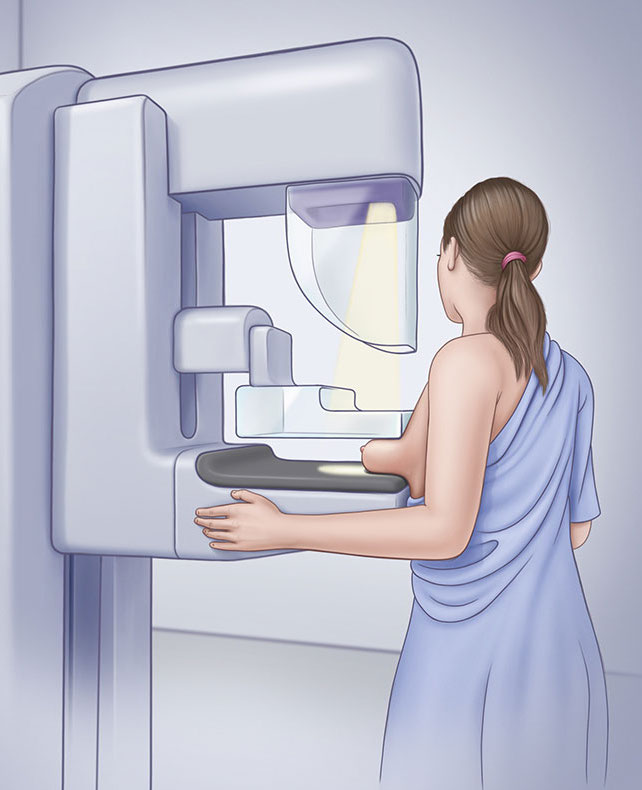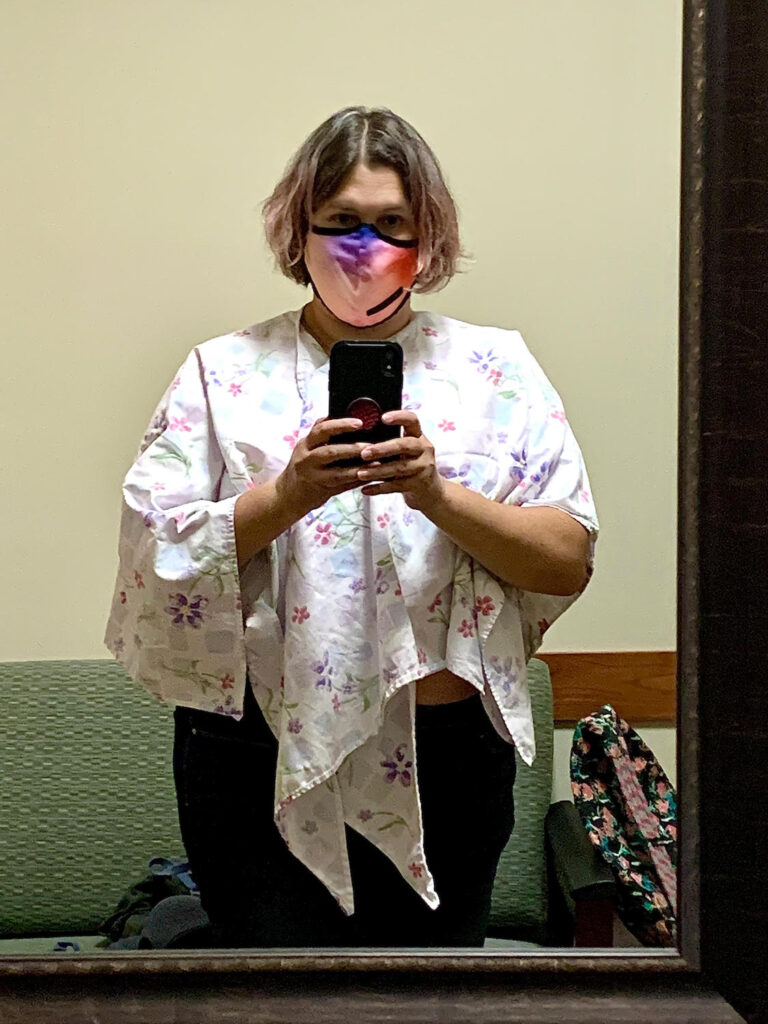
Mammogram love: Why I get my boobs squished every year (and why you should, too)
I got my first mammogram when I was 45 years old. It was also two years after my mom died of breast cancer. I mention this not because it sent me running to get my boobs squished, but because it was the opposite. I actually don’t think I am a high risk for breast cancer, but it’s just one fact of my overall annual health checkup that keeps me aware of my body.
My mom died of breast cancer (probably) because she also took up smoking for the last 25 years or so of her life. She also, for some unlucky chain of events, did not get a mammogram in her last decade. I’ll never know 100% why, but I also wasn’t asking her, “Hey, did you get a mammo this year?”
Now, I don’t smoke, but according to the National Cance Institute, my decades-long use of birth control pills only increased my likelihood of getting breast cancer very slightly. What really increases your risk for breast cancer are two factors: being female and getting older. Great.
What really increases your risk for breast cancer are two factors: being female and getting older.
In the category of “newsflash: there’s nothing you can do about that!” is this sad truth of science. Older women have a higher chance of getting breast cancer than they did when they were younger. But that chance is still relatively low, if all other factors stay the same as you age. For example, “ a young woman in her 30s has a one in 233 chance (less than half a percent) of developing breast cancer, while the risk for a woman in her 60s is one in 27 (3.7 percent). The statistic that one in eight women is at risk for developing breast cancer is true only when considering the yearly risks for women of all ages — including those in their 90s,” note the experts at Brigham and Women’s Hospital. Other risk factors include some lifestyle things, like being sedentary, but also many genetic or hereditary factors that we also have no control over.
Possible increases in breast cancer risk include these factors:
- Being female
- Age (most breast cancers occur after age 50)
- A family history of breast, ovarian, or prostate cancer (increases risk 2-3 X)
- Inherited genes, which include mutations in:
- BRCA1
- BRCA2
- p53
- CHEK2
- ATM
- PALB2
There are many other genes and factors still under study, including radiation exposure from childhood cancer treatments, European heritage (including Ashkenazi Jewish heritage), if you started your first period before age 12, and other potential factors. The Susan G. Komen Foundation has an extensive table with information on factors that can or may increase your breast cancer risk.
The science on risk factors is always evolving as we learn more about (gasp) women’s bodies. But there’s also a lot of nonsense out there that has been debunked over the years. For example, no, caffeine consumption does NOT cause or increase your risk of breast cancer. Neither does wearing an underwire bra or being left-handed. Here’s a list of more things that DO NOT raise your breast cancer risk.
That being said, let’s all just get some diagnostic testing done, shall we? A great place to start is a mammogram.
When should you schedule your mammogram?
The current guidelines (checks watch) for getting a mammogram are to begin getting a scan if you are of “average risk” at age 40-44. Now, thanks to the Affordable Healthcare Act (aka Obamacare) mammograms have to be covered by your health insurance. But you can also find pop-up clinics, often in a cool mobile mammogram unit like an RV, sponsored by local hospitals and clinics.
In fact, guidelines only recently shifted to recommend women start mammograms at age 40 as of April 2024.
When you hit age 45, the American Cancer Society recommends that you begin annual mammograms until age 54. Your doctor may even send you a letter about this around that age, but don’t wait to be asked! (I live in a relatively small town where we have two major hospitals, and I have to wait months to get in to see anyone like a dermatologist or even my primary physician. But I never have any trouble scheduling a mammogram.) Just get it done. Schedule it around the same time you go in anyway for an annual check up, or your annual gyno’ visit. I now remember that August/September is my mammogram time.
Then, when you hit age 55, if you are still of average risk and in good health, the ACS notes you can switch to bi-annual mammograms, or still stick with yearly ones. And that can continue as long as you’d like.
Why get a mammogram every year?
The great thing about mammograms is that they are some of the best ways to catch breast cancer early – when treating it will be not only the most successful, but also the least invasive.
“Results from many decades of research clearly show that women who have regular mammograms are more likely to have breast cancer found earlier, are less likely to need aggressive treatments like surgery to remove the entire breast (mastectomy) and chemotherapy, and are more likely to be cured,” notes the American Cancer Society.

What it’s like to get a mammogram
The day of your mammogram, they will ask you to not wear any lotion or deodorant that could cause the plates of the machine to slide and not hold your breasts in the right spot. I’ve always done my scans in the morning, so usually this isn’t a problem, but many offices also have some wipes, etc., available if you forget.
When I’ve gone in for my scan, there’s an outer room where you leave your bra and shirt, and they give you a sassy “hospital gown cape” to wear over your top. Take a second and appreciate your little cape. You’re a superhero – Taking-Care-of-My-Health Woman!
This process will repeat a few times on each side, and then that’s it. A radiologist will look at the pictures and you’ll get a notification likely in a week or two about your results. If there’s anything they need to take another look at, or if you need to talk to your physician, they’ll let you know.

The experience of getting a mammogram
I’ve never had anything but a really straightforward time having a mammogram. I’ve always had female techs who I nervously joke with, and it’s been done in less than 10 minutes and I’m on my way. Friends have had some anxiety going in, and one even started to get a little woozy from her fears. Luckily, she was in verbal communication with her tech so they could quickly get her seated, and she recovered in just a minute. It was just stress and anxiety – but her ability to advocate for herself and give a big “heads-up!” about how she was feeling was vital to her good experience.
I’ve also heard people anecdotally compare getting a mammogram to the worst pain they’d ever experienced. And simply put, I’ve never found that to be the case. My best advice is to keep in communication with your radiologist as they are performing the scan, and if something hurts, say something. You are your best advocate for yourself – so don’t be afraid to let them know you’re not having a good time.
It’s your boobs we’re talking about! Be their hero.

